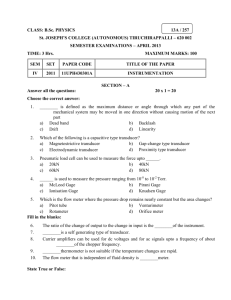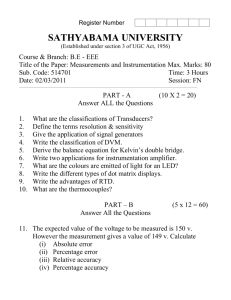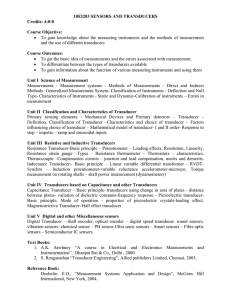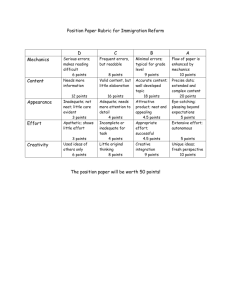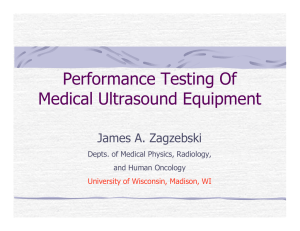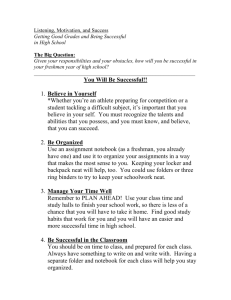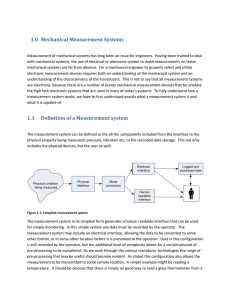CORE ELECTIVE INSTRUMENTATION
advertisement
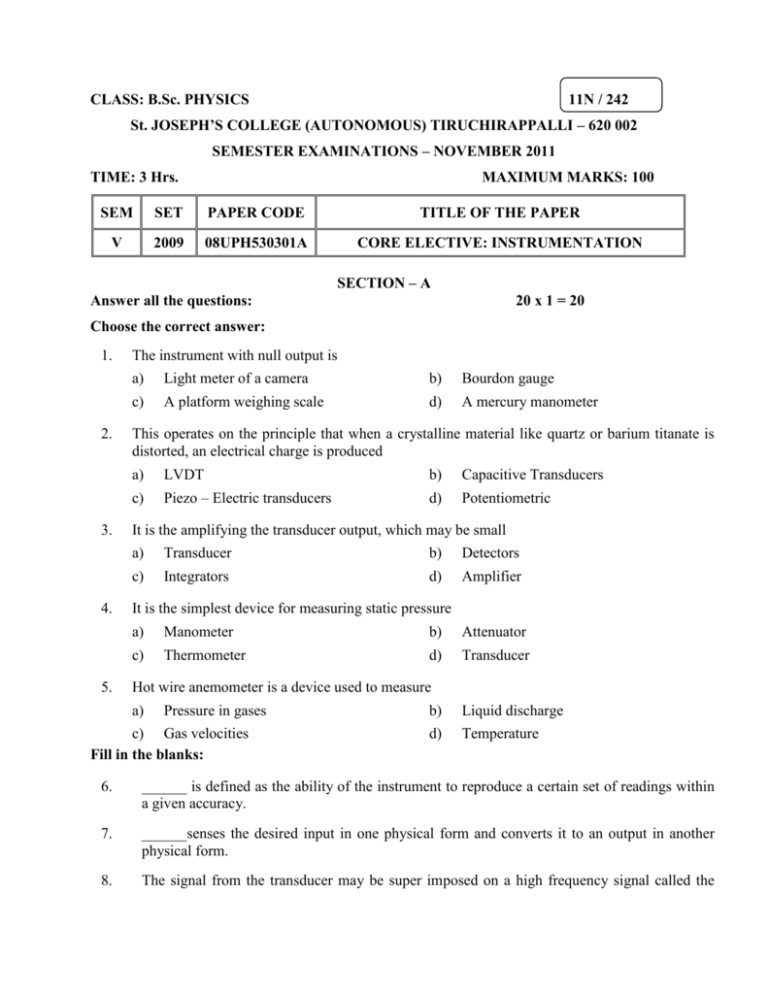
CLASS: B.Sc. PHYSICS 11N / 242 St. JOSEPH’S COLLEGE (AUTONOMOUS) TIRUCHIRAPPALLI – 620 002 SEMESTER EXAMINATIONS – NOVEMBER 2011 TIME: 3 Hrs. MAXIMUM MARKS: 100 SEM SET PAPER CODE TITLE OF THE PAPER V 2009 08UPH530301A CORE ELECTIVE: INSTRUMENTATION SECTION – A Answer all the questions: 20 x 1 = 20 Choose the correct answer: 1. 2. 3. 4. 5. The instrument with null output is a) Light meter of a camera b) Bourdon gauge c) A platform weighing scale d) A mercury manometer This operates on the principle that when a crystalline material like quartz or barium titanate is distorted, an electrical charge is produced a) LVDT b) Capacitive Transducers c) Piezo – Electric transducers d) Potentiometric It is the amplifying the transducer output, which may be small a) Transducer b) Detectors c) Integrators d) Amplifier It is the simplest device for measuring static pressure a) Manometer b) Attenuator c) Thermometer d) Transducer Hot wire anemometer is a device used to measure a) Pressure in gases c) Gas velocities Fill in the blanks: b) Liquid discharge d) Temperature 6. ______ is defined as the ability of the instrument to reproduce a certain set of readings within a given accuracy. 7. ______senses the desired input in one physical form and converts it to an output in another physical form. 8. The signal from the transducer may be super imposed on a high frequency signal called the ______. 9. The fundamental law that is used in temperature measurement is known as the ______. 10. The reference is ______. power for determining the sound power level State True or False: 11. Accuracy of control can be better than the accuracy of measurement of the control variables. 12. Eddy current type of transducer gives an output proportional to velocity. 13. Dc amplifiers suffer from drift. 14. Pressure readings can be negative if measurements are taken in ‘gage pressure’ scale. 15. Pitot tube is quite suitable for measuring very low velocities. Answer in one or two sentences: 16. What is voltage amplification? 17. Write some example of non-self generating transducers. 18. What are the types of amplifiers using for instrumentation and measurement work? 19. Write about absolute pressure in one or two sentence. 20. Write any two characteristics of sound. SECTION – B Answer all the questions: 21. a. 5 x 4= 20 Explain the functional elements of a measurement system. OR 22. b. Explain the sensitivity drift effects on instrument characteristics. a. Explain Potentiometric resistance types transducer with neat diagram. OR 23. b. Describe the electrodynamic type of transducer. a. Describe hydraulic Amplifying element. OR 24. b. Explain the Pneumatic load cell. a. Explain solid rod thermometer with neat diagram. OR 25. b. For a certain thermistor = 3140k and the resistance at 27c is known to be 1050. The thermistor is used for temperature measurement and the resistance measured is as 2330. Find the measured temperature. a. Explain ultrasonic flow meters with neat diagram. OR b. The sound pressure level measured at 10m from an automobile horn is 110dB. Determine the sound pressure level at distances of (a) 20m and (b) 80m. Assume that the inverse square law holds good between intensity and distance. SECTION – C Answer any FOUR questions: 26. 4 x 15 = 60 Explain: a) Accuracy b) Static sensitivity with neat diagram c) Hystersis with neat diagram. 27. Describe LVDT and Capacitive type transducer. 28. Derive A – D and D – A converters with neat schematic diagram. 29. Explain Mcleod gage and Ionisation gage with neat diagram. 30. Explain: a) Capacitor type microphone b) Piezo – electric crystal type microphone c) Carbon microphone. **************
